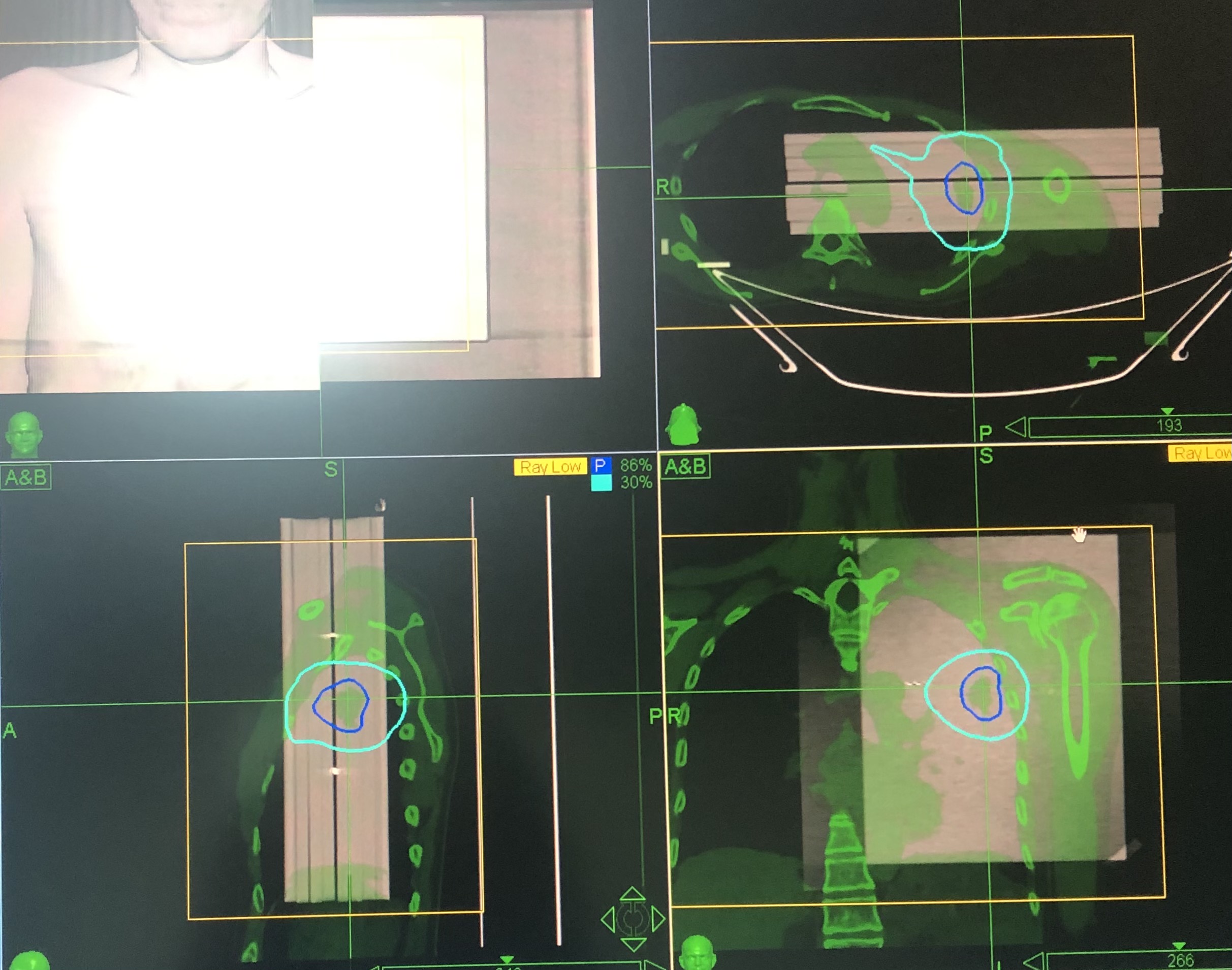Plan Delivery Quality Assurance of Lung Stereotactic Body Radiation Therapy for CyberKnife
PO-1581
Abstract
Plan Delivery Quality Assurance of Lung Stereotactic Body Radiation Therapy for CyberKnife
Authors: Ferihan Ertan1, Serdar Sahin1
1Dr.Abdurrahman Yurtaslan Ankara Oncology Teaching and Research Hospital, Radiation Oncology, Ankara, Turkey
Show Affiliations
Hide Affiliations
Purpose or Objective
The aim of this work was to evaluate
CyberKnife patient-specific delivery quality assurance (DQA) using film
dosimetry for lung stereotactic body radiation therapy (SBRT).
Material and Methods
In this
study, 20 lung cancer patient plans were selected to conduct DQA measurements. We
performed CyberKnife DQA using solid water slab phantom and Gafchromic EBT-3
film for dose verification. For phantom set-up, four fiducial markers were
attached to the top of the phantom for fiducial tracking. Film was placed
between the slabs. Then, CT image of the phantom was acquired using a CT
simulator. The DQA plan was created by overlaying the deliverable plan on the
solid water slab phantom in Multiplan treatment planning system (TPS). The
central axis of the device was aligned with planning target volume center. All
beams were rearranged and the dose was scaled down to 2 Gy for each plan. The final dose calculations were performed
with Ray Tracing calculation algorithm with high resolution. The DQA plan in
TPS was shown in Fig.1. Gafchromic EBT-3 film was irradiated on CyberKnife G4
unit. For the calibration process, Gafchromic EBT3
films were cut into 5 × 5 cm2 squares, and were placed at a 1.6 cm
depth using a 0° gantry angle, SSD=100 cm, 10 × 10 cm field size, under 6 MV energy. Doses
of 50, 100, 200, 300, 400, 500 were applied to obtain the calibration curve. Films were scanned using an Epson 10000XL flatbed scanner
after waiting for 24 h to ensure color stabilization. The DQA planning doses
were imported as Dicom RTDose and the
calculated and measured doses were analyzed using the PTW Verisoft 6.2 software
program.

Results
In our study, the
results were evaluated by applying 3% dose-difference (DD) and 3 mm
distance-to-agreement (DTA) limits. Gamma comparison of measured and calculated
doses showed good agreement. The gamma-passing rate ranged between 90.1% and 98.6%. 11 plans had an
average passing score of greater than 95%. For the other 9 plans it was less
than 95%.
Conclusion
Patient-specific
DQA for CyberKnife lung SBRT using film was implemented in a convenient way. Also,
scaling down of the dose makes the DQA process practical to prevent an
additional uncertainty. This study analysis showed that the implementation of
film-based DQA dose verification could be conducted truly to improve lungs
treatment safety on CyberKnife.